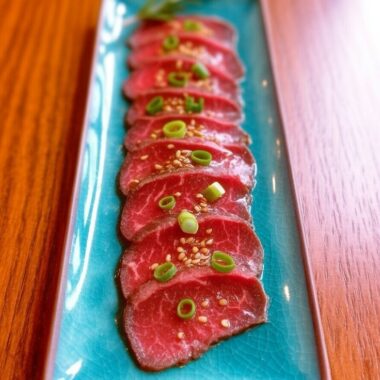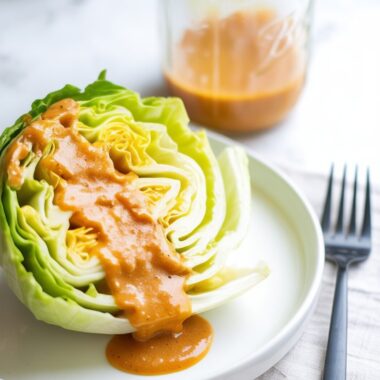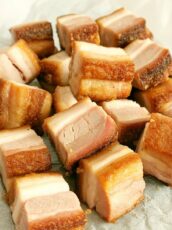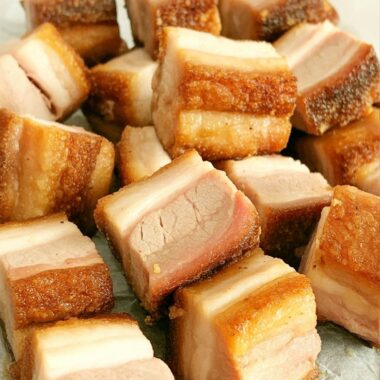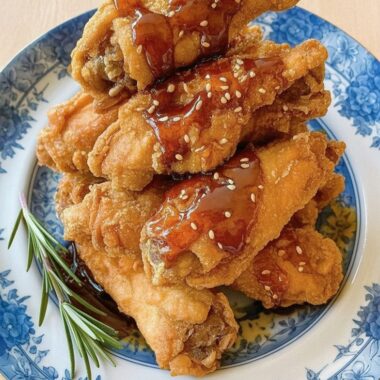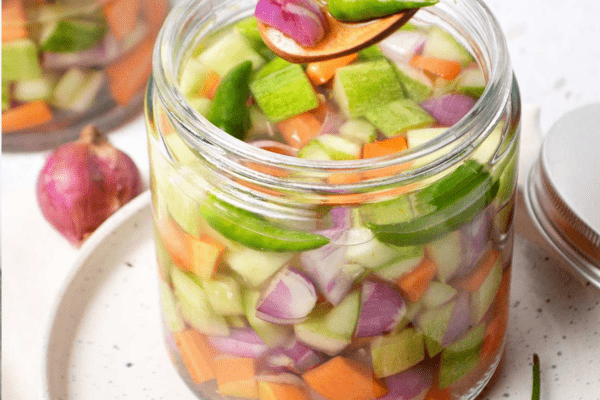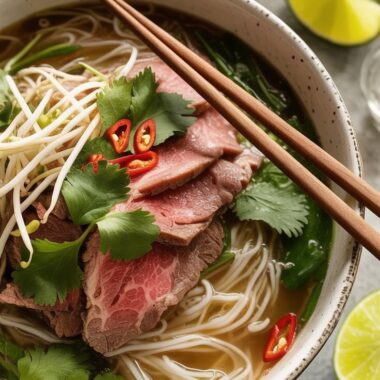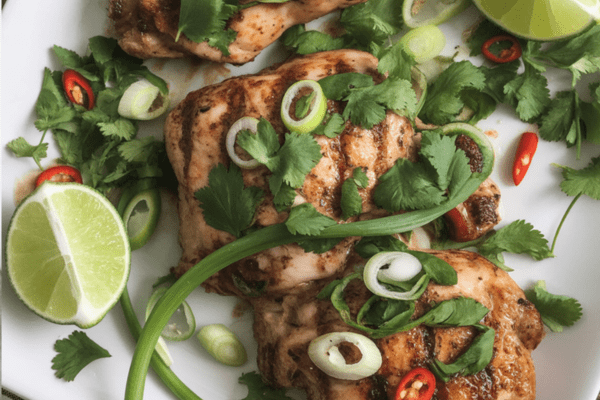If you’ve ever wanted to make something indulgent, cozy, and just a little bit fancy without needing restaurant reservations — this Rose Tteokbokki is exactly that. It’s got that spicy-sweet Korean flavor we all love in tteokbokki, but mellowed out with a creamy, rich sauce that clings to every chewy rice cake. It’s the kind of dish that feels like a treat, but it’s super quick to whip up at home — around 30 minutes from start to finish.
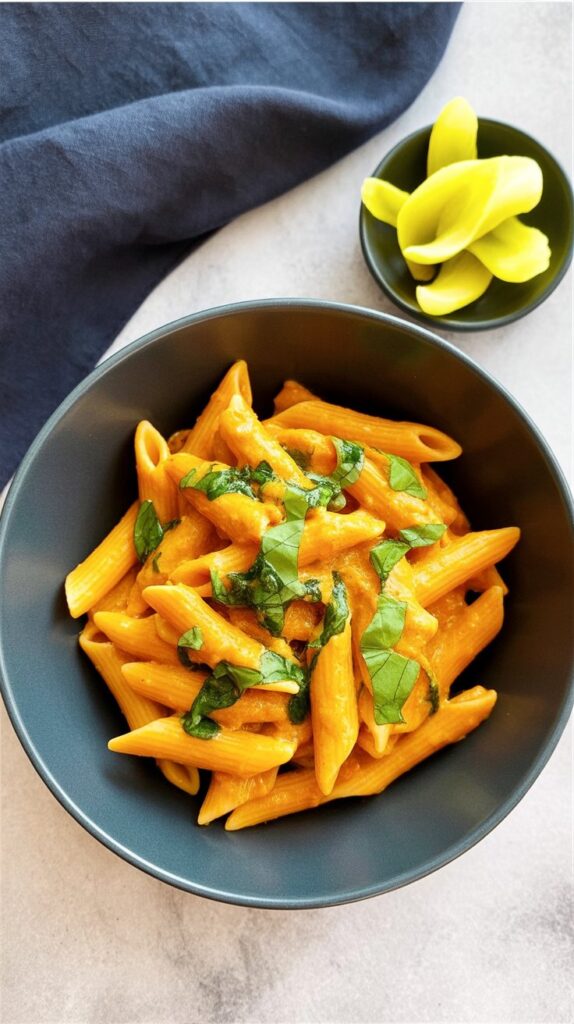
I first tried this twist on classic tteokbokki after seeing it blow up online. One bite in, and I was hooked. Now, it’s one of those comfort meals I come back to when I want something a little special but still easy enough for a weeknight dinner.
What Makes This Version of Tteokbokki Different?
At its heart, Rose Tteokbokki is just creamy, spicy comfort food done right. It swaps out the intense spice of traditional tteokbokki with a softer, creamier sauce — a nod to the Western-style “rosé” sauces made from tomato and cream. But in this case, the tomato’s gone and replaced by gochujang — that thick, fermented Korean chili paste that brings heat, tang, and umami.
What you get is this rich pink-orange sauce that tastes like a cozy mashup of Korean street food and creamy pasta night. It’s spicy, but not knock-your-socks-off hot, which makes it perfect if you’re easing into Korean flavors or cooking for folks who can’t handle too much heat.
So, What Does It Taste Like?
If tteokbokki had a comfort food glow-up, this would be it.
The sauce is creamy and cheesy with a little smoky sweetness from the gochujang and just enough heat to keep it exciting. The rice cakes soak up the flavor beautifully while staying satisfyingly chewy. Add some fish cake, sausage, and melty mozzarella on top, and it’s hard not to go back for seconds.
Honestly, I’ve made this version during rainy evenings when all I wanted was something warm and rich. It hits that sweet spot between indulgent and soul-soothing.
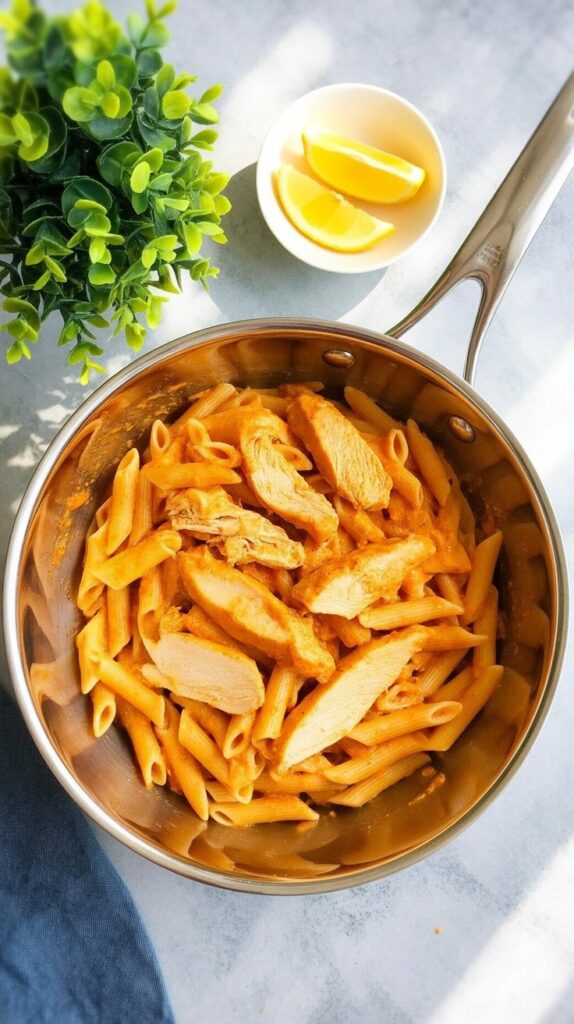
How I Like to Serve It
At home, we usually pair Rose Tteokbokki with yellow pickled radish — the tangy crunch is the perfect counter to the creamy sauce. If I have some leftover rice, I might roll it into little Korean rice balls and serve them on the side. Kimbap also works great if you want a full-on Korean dinner spread.
And if I’m feeling like going the extra mile, I’ll make a simple steamed egg (gyeranjjim) to balance out the richness. But honestly, this dish holds up beautifully on its own.
Ingredients You’ll Need
For the Creamy Sauce:
- 1.5 Tbsp gochujang (Korean chili paste) – I prefer one with a little sweetness.
- 1.5 Tbsp raw sugar
- 1.5 Tbsp regular soy sauce – I often use Kikkoman or Sempio.
- 1–2 tsp gochugaru (Korean chili flakes) – adjust depending on your spice level.
- 300 ml heavy cream
- 100 ml whole milk
For the Main:
- 1 Tbsp cooking oil
- 50g onion, thinly sliced
- 30g cabbage, thinly sliced – Napa or regular green cabbage works.
- 15g green onion, sliced
- 320g Korean rice cake (garaetteok) – I soak mine in warm water for 10 minutes if they’ve been in the fridge.
- 100g Korean fish cake, cut into bite-sized pieces
- 90g cocktail sausages – I like scoring them lightly so they curl a bit when cooked.
- 1/2 cup shredded mozzarella
- 1 Tbsp grated parmesan cheese – adds a salty depth.
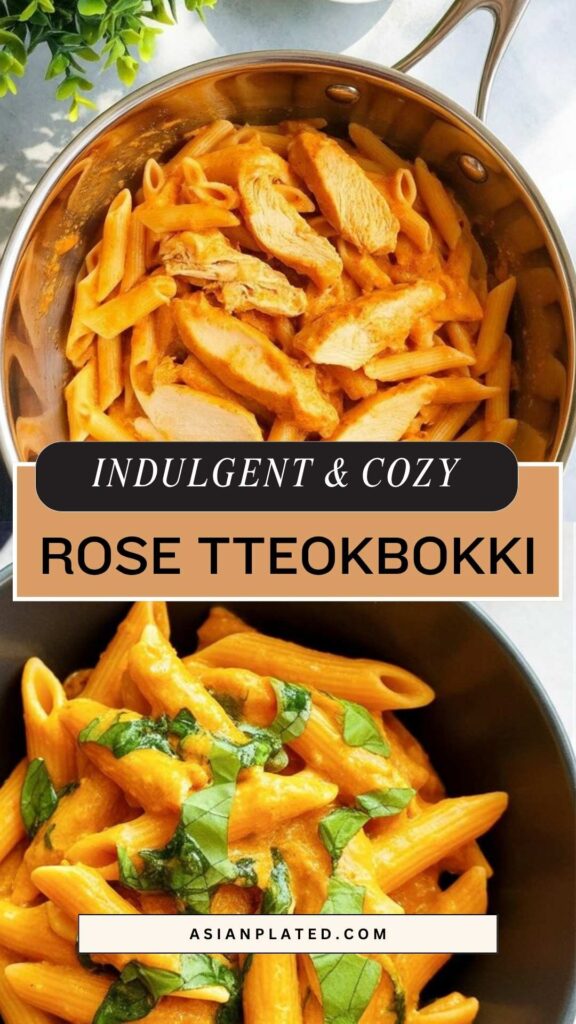
Optional Add-Ins:
- Gimmari (crispy seaweed rolls)
- Glass noodles or udon for more volume
- Bacon, if you’re feeling indulgent
Quick tip: If you like your food spicier, go for “Maeun Gochugaru” (extra spicy chili flakes). Just a little sprinkle makes a difference.
Step-by-Step Cooking Guide
1. Make the sauce base.
In a small bowl, mix gochujang, sugar, soy sauce, and gochugaru. This mix is the backbone of your rose flavor. Set it aside — it’ll come into play soon.
2. Sauté the aromatics.
Heat your pan and add the cooking oil. Toss in the onion, cabbage, and green onion. Stir-fry for about 3 minutes until they just start to soften. This adds a nice sweetness and depth to your sauce.
3. Add your spicy base.
Pour in the gochujang mixture and stir well so all the veggies are coated. Lower the heat a bit here to prevent burning.
4. Make it creamy.
Add heavy cream and milk, stirring everything together into a smooth, dreamy sauce. The color alone will make you hungry.
5. Add the main ingredients.
Toss in the rice cakes, fish cakes, and sausages. Crank the heat back up to medium-high and stir as it comes to a simmer. Keep an eye on the rice cakes — they should be soft but still chewy, not mushy.
6. Finish with cheese.
Once the sauce thickens and clings to everything nicely, sprinkle mozzarella and parmesan all over. Let it melt a bit — that cheesy finish really makes it addictive.
Kitchen Notes and Tips
- Softening rice cakes: If your tteok are refrigerated or frozen, soak them in warm water for 10–15 minutes before cooking so they don’t stay tough in the center.
- Use fresh cream and whole milk for the creamiest sauce. Low-fat options tend to break or feel watery.
- Cheese balance: Mozzarella gives that stretchy cheese pull, but parmesan adds sharpness. If you’re skipping one, stick with mozzarella.
Can You Make It Ahead?
Honestly, this dish tastes best freshly made. But if you’re prepping for a group, you can chop all the veggies and mix the sauce base earlier in the day. I’ve done this when hosting friends, and it made the cooking process super quick later.
Just hold off on cooking the rice cakes until you’re ready to serve — they tend to harden if left sitting too long in the sauce.
Leftovers and Storage
If you happen to have leftovers, let them cool, then store in an airtight container in the fridge for up to 2 days. The sauce will thicken as it sits, so when reheating, add a splash of milk or cream and gently warm it up on the stove.
I don’t recommend freezing this one — the texture of the rice cakes just doesn’t hold up well after thawing.
FAQs
Is Rose Tteokbokki very spicy?
Not really. It has a gentle heat that’s balanced by the cream and cheese. But if you’re sensitive to spice, just reduce the gochugaru or skip it entirely.
Can I make it vegetarian?
Definitely. Skip the fish cakes and sausage and load up on veggies or tofu instead. Even mushrooms work great here — I’ve tried it with king oyster mushrooms, and it was delicious.
What’s the difference between this and regular tteokbokki?
Traditional tteokbokki is spicier and more broth-based, with a bright red gochujang sauce. This version is creamier and milder with a richer texture — it feels more like Korean pasta in a way.
Let me know if you try it — I love hearing how you put your own twist on it. Whether you add bacon, more cheese, or go full veggie, this rose tteokbokki is the kind of comfort food that always satisfies.
Rose Tteokbokki
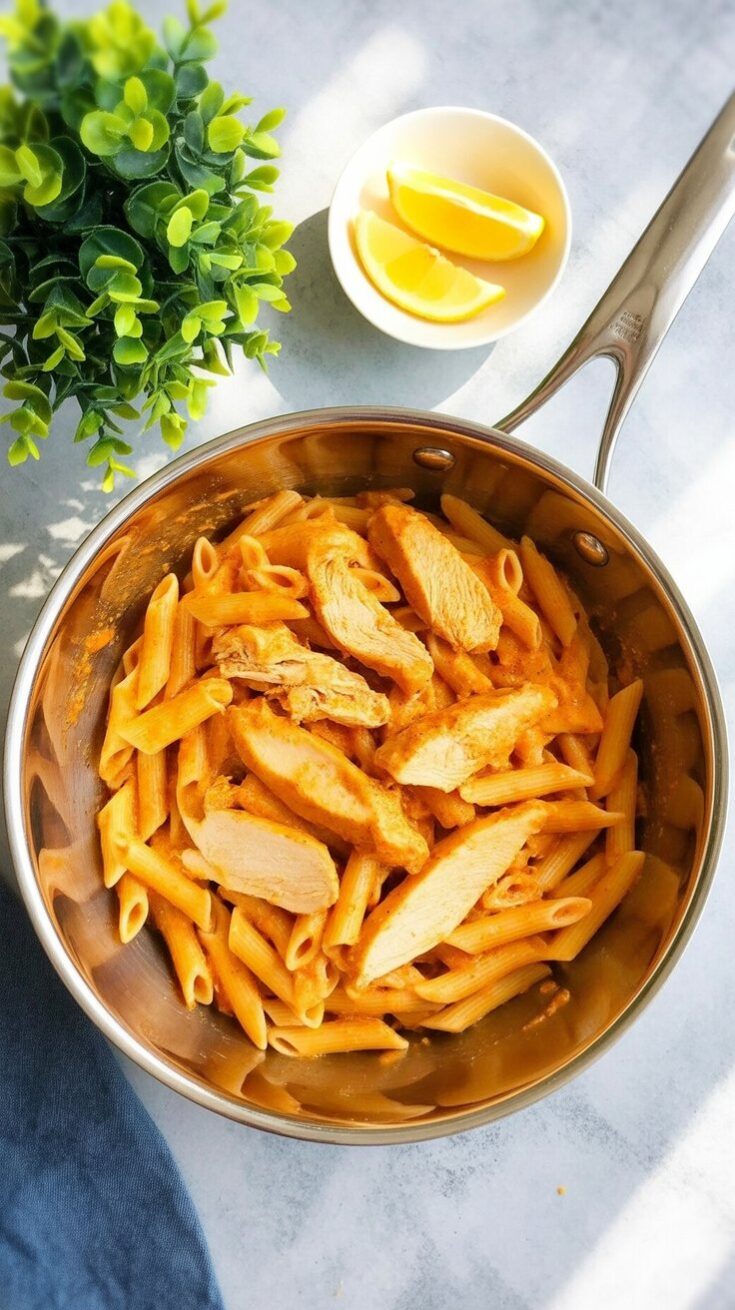
If you crave a comforting spin on Korean street food, this rose tteokbokki delivers a velvety, savory kick with just the right amount of heat.
Ingredients
- 320g Korean rice cakes (garaetteok), cut if large
- 100g Korean fish cake, bite-sized
- 90g cocktail sausages, lightly scored
- 30g cabbage, thinly sliced
- 50g onion, thinly sliced
- 15g green onion, sliced
- 1 Tbsp cooking oil
- 1.5 Tbsp raw sugar
- 1.5 Tbsp soy sauce
- 1.5 Tbsp gochujang (Korean chili paste)
- 1–2 tsp gochugaru (Korean chili powder/flakes), to taste
- 300ml heavy cream
- 100ml whole milk
- 1/2 cup mozzarella cheese, grated
- 1 Tbsp parmesan cheese, grated
Optional additions:
- Gimmari (fried seaweed roll)
- Glass noodles or udon
- Bacon
Instructions
- Start the Sauce:In a small bowl, blend gochujang, sugar, soy sauce, and gochugaru until smooth. Set aside.
- Stir-Fry Veggies:Heat the oil in a large pan over medium. Sauté onion, cabbage, and green onion for 2–3 minutes until just wilted.
- Build the Creamy Base:Lower the heat and fold in the prepared sauce mix. Pour in the cream and milk, stirring to create a silky pink sauce.
- Add the Toppings:Toss in the rice cakes, fish cake pieces, and cocktail sausages. Increase heat to medium-high and let everything bubble gently. Stir regularly, cooking until the rice cakes soften and the sauce starts to thicken—almost coating everything (about 6–8 minutes). Don’t overcook, or the rice cakes can get too mushy.
- Finishing Touch:Scatter mozzarella and parmesan cheese evenly over the pan. Let it melt—just a minute or two—for that irresistibly gooey finish.
- Serve & Enjoy:Spoon the cheesy, creamy tteokbokki into bowls. Garnish with extra green onion or even some optional add-ins for a heartier meal.
Notes
Nutrition Information:
Yield: 3 Serving Size: 1Amount Per Serving: Calories: 1291Total Fat: 66gSaturated Fat: 33gTrans Fat: 1gUnsaturated Fat: 28gCholesterol: 194mgSodium: 2140mgCarbohydrates: 140gFiber: 7gSugar: 19gProtein: 35g
Asianplated.com, occasionally offers nutritional information for recipes contained on this site. This information is provided as a courtesy and is an estimate only. This information comes from online calculators. Although allchickenrecipes.com attempts to provide accurate nutritional information, these figures are only estimates.
Try other Korean recipes:

